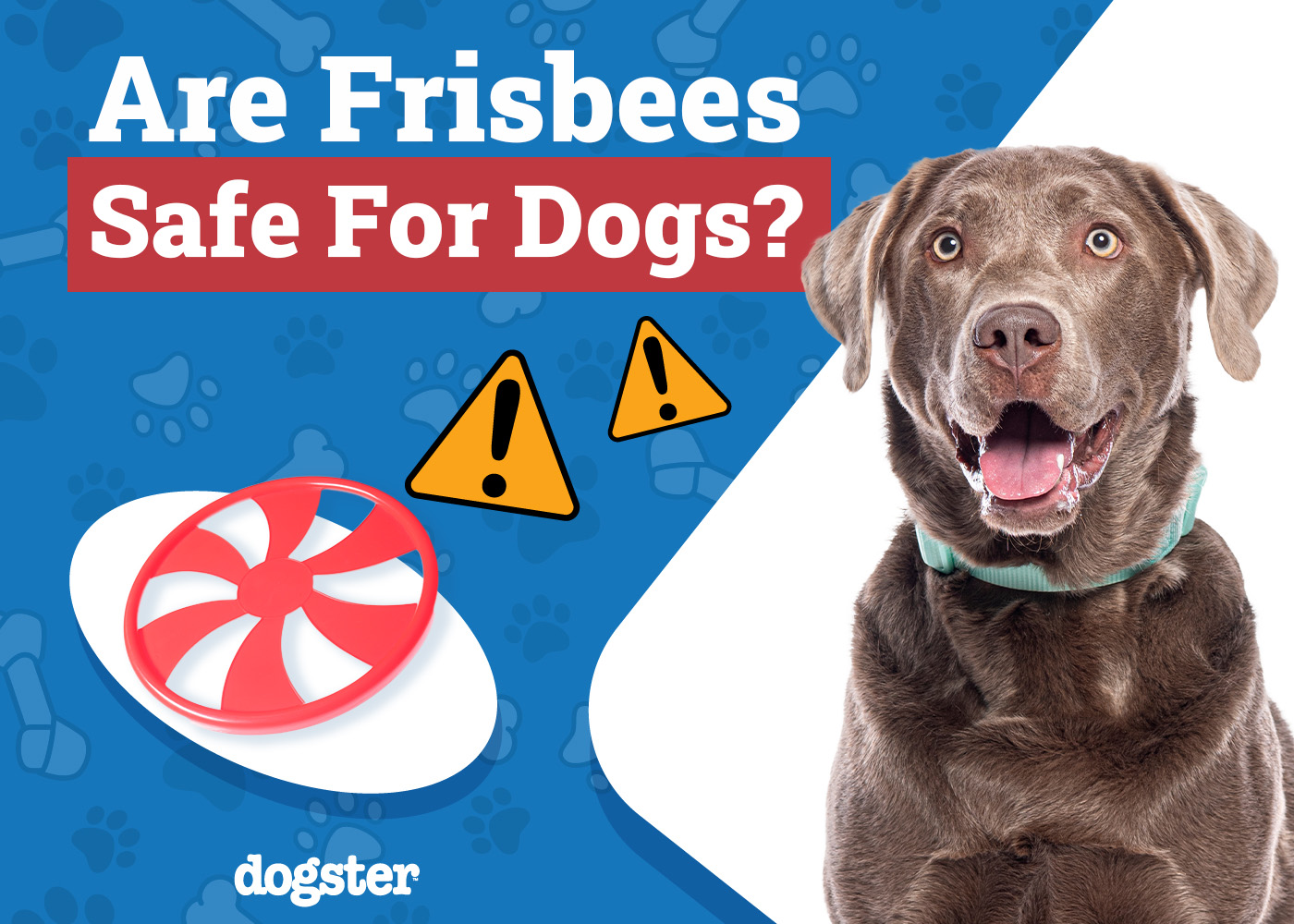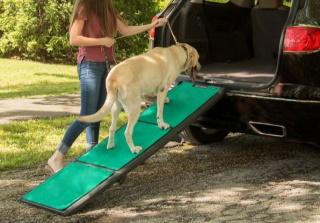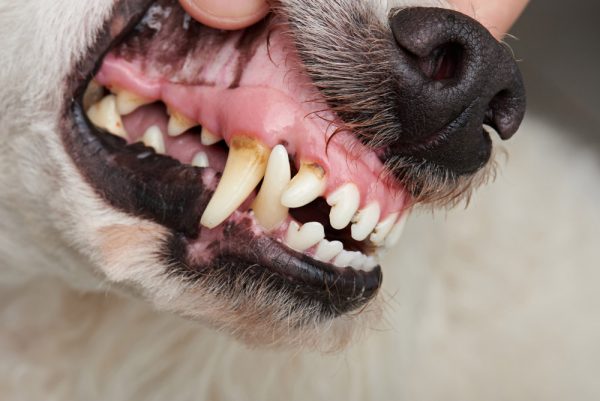If you own a high-energy dog breed, finding ways to tire them out can be exhausting. Tossing a Frisbee can seem like a simple solution, but is the activity safe for dogs? Frisbees can harm your dog, but there are ways to minimize the risks and allow your pet to play safely.
In this article, we’ll cover the two safety concerns Frisbees pose to your dog and how to deal with them. We’ll also give you tips to prevent injuries when your dog participates in athletic activities.

The Risks Associated with Frisbees
There are two main issues with frisbees. One is their hard texture and another is a dog’s tendency to jump, twist, or suddenly stop when using them, leading to sporting injuries.
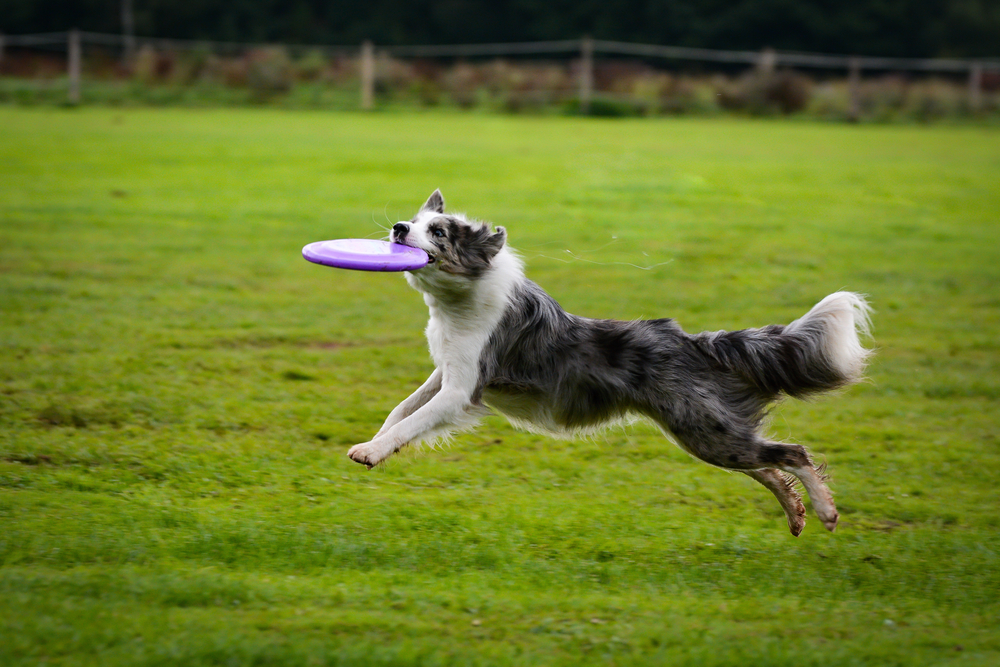
Hard Texture
Depending on the material the Frisbee is made of, chewing it can be rough on your dog’s teeth. Traditional plastic discs, designed for humans, can wear down your dog’s teeth if they are used as a chew toy. If the disc is caught at speed, there is the potential for it to fracture one of your dog’s teeth, leading to pain and possible dental extractions.
Plastic discs can break or develop rough edges which can easily cut your dog’s mouth or gums as they chew. If your dog were to chew off and swallow the plastic pieces, they could become stuck in their digestive tract, causing a blockage.
Bone, Joint, or Muscle Injuries
Any physical activity your dog participates in can result in an injury. However, playing fetch with a Frisbee or ball can be particularly risky when it comes to causing bone, joint, or muscle injuries.
In the case of the Frisbee, excited dogs frequently jump to catch the floating disc and land hard or awkwardly on two legs. Hard landings can result in knee injuries, like a cranial cruciate ligament tear (similar to an ACL tear in humans.) Dogs can also suffer fractures, muscle strains, or soft tissue injuries.
Quick stops and starts and sudden direction changes are other common causes of injury for dogs playing Frisbee.
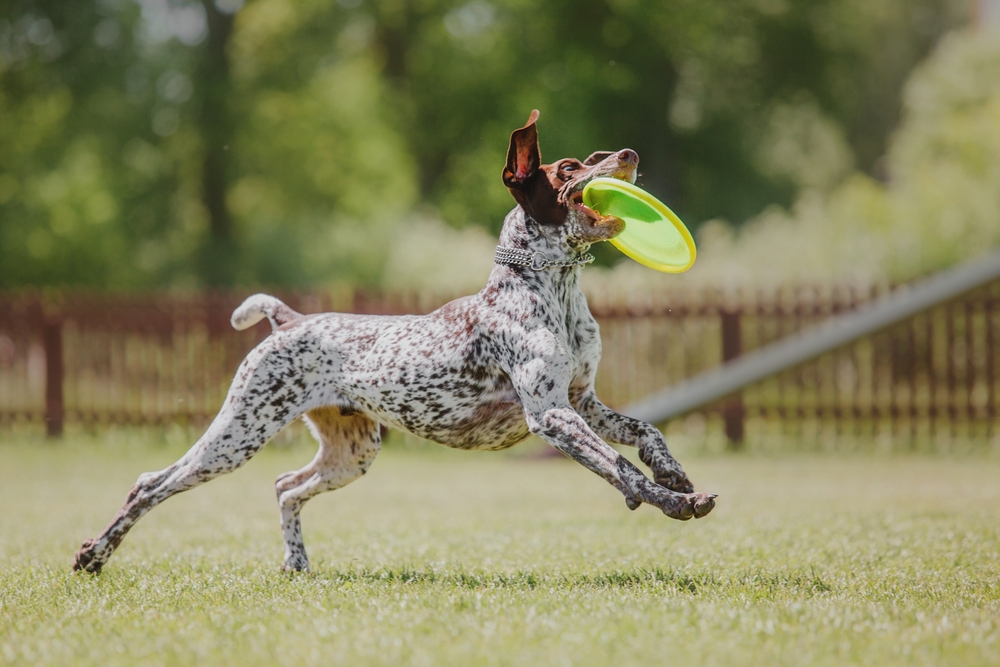
Minimizing the Risks Associated with Frisbees for Dogs
To keep your dog safe, never let them play with a Frisbee without supervision. You can also purchase a Frisbee made of gentler, more dog-friendly materials than hard plastic. Should the Frisbee become worn or torn, replace it right away.
Although you cannot completely prevent injuries in your dog while playing Frisbee, there are a few steps you can take to make the game safer.
- First, make sure your dog is healthy and in good physical condition before performing any strenuous exercise. This includes being a healthy weight, as obese dogs are more prone to injuries like cruciate ligament tears.
- You should only toss a Frisbee for your dog in a safe, enclosed area with minimal distractions. Avoid play surfaces with slippery, hard, or uneven surfaces, such as mud, concrete, or gravel.
- Do your best to minimize jumping or quick direction changes.
- Throw the Frisbee low to the ground, far, and straight, directly away from your dog.
- Try a “fake” throw first to allow your dog to run a short distance before you launch the Frisbee for them to catch.
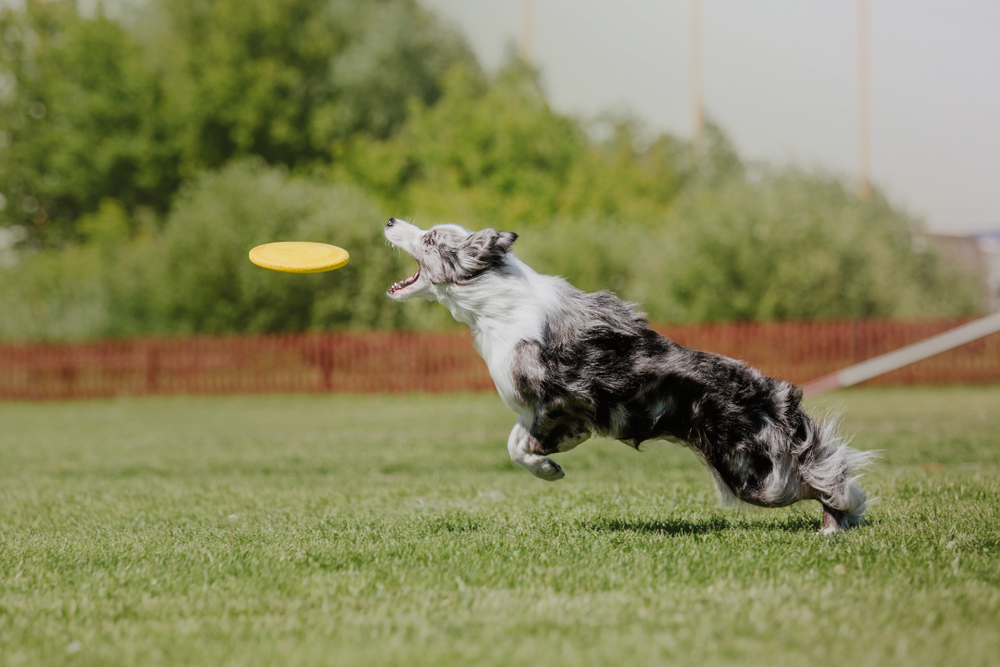

Tips to Prevent Exercise Injuries in Dogs
Playing with a frisbee may be a common source of exercise injuries in dogs, but any physical activity can result in problems. Here are some tips to prevent injuries in athletic and high-energy dogs.
- Before you start playing Frisbee or other strenuous activity with your dog, visit your veterinarian for a physical examination. They can assess your dog’s fitness level and check for health conditions, such as inherited joint problems like hip dysplasia.
- Build your dog’s strength and conditioning through gradual training. Be cautious about overexertion in growing or older dogs. They are especially vulnerable to joint and bone injuries.
- Before starting a game of Frisbee, have your dog warm up, and practice range-of-motion stretches to activate their muscles. Afterward, allow your dog to cool down and consider more stretching or muscle massage.
- Keep your dog at a healthy weight, feed a balanced diet, and ask your veterinarian if joint health supplements are necessary.
- If your dog shows signs of injury, such as limping, holding up a limb, or moving more slowly and stiffly, take a break from exercise and call your veterinarian.

Conclusion
With proper training, conditioning, and a few precautions, chasing Frisbees can be a safe and fun way for your dog to burn energy. However, if you’d rather avoid the risks of playing Frisbee, there are plenty of other ways to exercise your dog.
Jogging, hiking, swimming, running off-leash in a fenced area, or enjoying other canine sports like agility courses are all excellent options to keep your dog fit and healthy.
Featured Image Credit: BIGANDT.COM, Shutterstock
